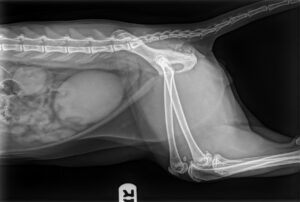
Unfortunately, feline urinary obstruction is prevalent in young to middle-aged male cats.
Have you noticed that your cat is unable to urinate correctly? It may be due to urethral obstruction (UO). Unfortunately, this feline urinary obstruction is prevalent in young to middle-aged male cats. Let’s explore more below.
Consider Mount Carmel Animal Hospital as your go-to animal hospital!
What is Feline Urinary Obstruction?
A feline urinary obstruction refers to a blockage of the lower portion of the cat’s urinary tract. Male cats are more vulnerable to UO because their urethra (the piece of the urinary tract connecting the bladder to the outside) is longer and narrower than in females. Cats that consume dry food or overweight cats only are at higher risk. Left untreated, this condition is fatal and requires immediate attention.
Causes of Urethral Obstruction in Cats
Urethral obstruction can have numerous causes. These may include physical obstructions like urinary stones, tumors, strictures, or urethral plugs. Mechanical blockages may also happen secondary to urethral spasms or swelling due to inflammation in the lower urinary tract. In addition, one prevalent condition in felines that may result in bladder inflammation and secondary obstruction is Idiopathic Feline Lower Urinary Tract Disease.
A feline urinary obstruction causes a back-up of urine, which can harm the lower urinary tract and cause kidney failure. Without assistance, UO can cause a cat to become very sick quickly, so it’s critical for pet owners to recognize this condition early.
Clinical Signs
Unfortunately, signs of urethral obstruction might not be recognizable to many pet parents until the condition is quite advanced and the feline is obviously ill. Early signs of a feline urinary obstruction include:
- Increased vocalization
- Frequent trips to the litter box
- Cats lick more at their hind ends
- Straining in the litterbox
- Vomiting
- Lethargy
- Inability to stand up
- Dull mentation
Diagnosis
Your veterinarian will assess your cat to see if it has a large, firm, sometimes painful bladder that can’t be expressed. Some cats might still have a smaller urinary bladder if there is a partial obstruction or if it’s in the early stages of developing a UO. In addition, your vet will also want to submit more diagnostic testing to analyze how severely the cat is affected and to determine an underlying cause. These diagnostics include urine and blood testing and imaging of the urinary tract with either ultrasound or x-rays.
Treatment
The most crucial treatment is relieving the urinary blockage. This is often accomplished by placing a urinary catheter under anesthesia or sedation. Once the urinary catheter is inserted into the cat’s bladder, it empties out the bladder to remove any inflammatory or crystalline material. Once the feline has clinically improved, the urinary catheter is eliminated, and the cat will need to be monitored closely to ensure it can urinate on its own. The cat will need to be hospitalized during this treatment for close monitoring. It will also be placed on IV fluids to help with any acute kidney damage and flush out the bladder.
Prognosis
Unblocking is typically successful as long as the cat isn’t blocked for too long prior to intervention. Unfortunately, felines who have had one urethral obstruction are at risk of having it again, so pet owners must take preventative measures at home. A urinary diet is often advised to prevent the development of stones or urinary crystals. Keeping the cat hydrated is vital, so feeding canned food, offering fresh water daily, and encouraging water intake by putting extra water into food may help.
HERE AT MOUNT CARMEL ANIMAL HOSPITAL, WE’LL TREAT YOUR PETS LIKE FAMILY!
Mount Carmel Animal Hospital has been serving the Northern Baltimore/Southern York community for over 30 years and is proud to be an independently operated, small animal practice committed to excellence in veterinary medicine and client service. From grooming to wellness services, along with Canine Life Skills Training Courses, and surgical procedures, we have the expertise that will best serve the needs of you and your pet. Contact us at 410-343-0200 and follow us on Facebook
